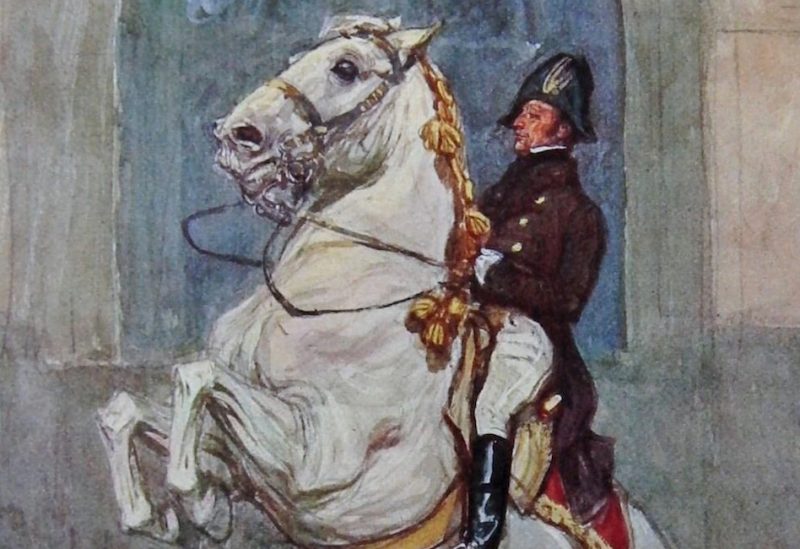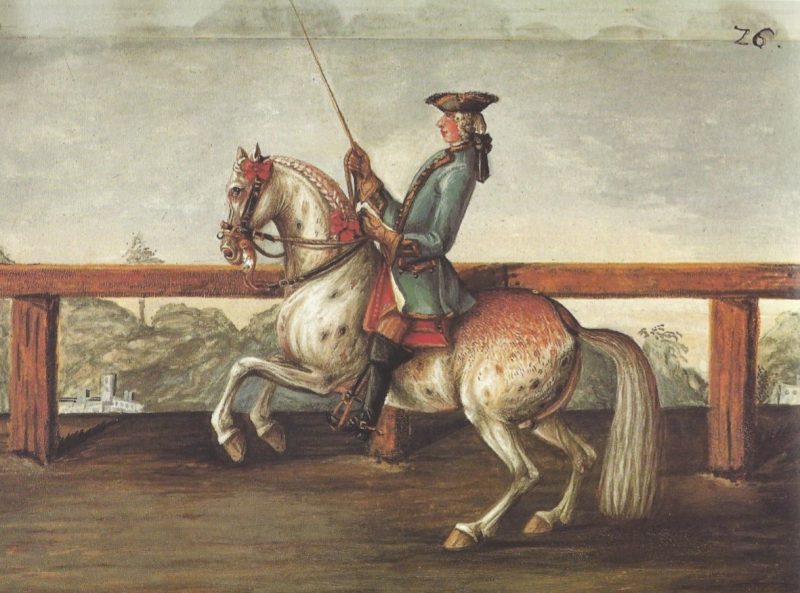
(© Kip Mistral 2019. “Fragments from the Writings of Max Ritter von Weyrother, Austrian Imperial and Royal Oberbereiter,” published by Xenophon Press, 2017. Images and quotations from within are used with permission of the publisher. Image detail from Courbette by Ludwig Koch 1866-1934)
Maximillian Ritter von Weyrother (1783–1833) was Chief Rider of the Spanish Riding School in Vienna from 1813, and Director from 1814 to 1833. And why should we care to read a book of his writing fragments, you might ask. Is he just one more riding master in the cavalcade of horses and riders through time who codified his personal embrace of equestrian art? The answer would be no.




